‘Futurama’ and the TV Shows That Refuse to Die
- Oops!Something went wrong.Please try again later.
- Oops!Something went wrong.Please try again later.
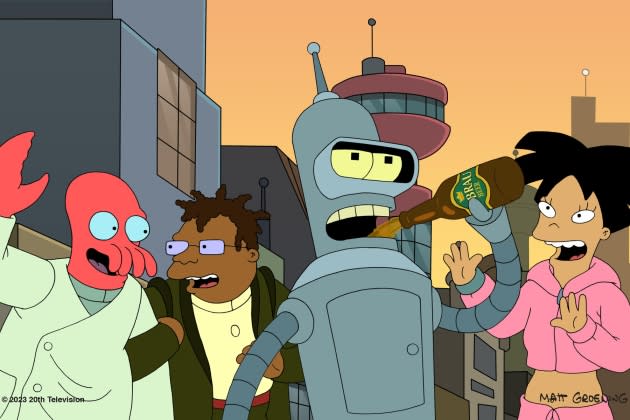
Of course Futurama is back with a new season today, 10 years after the last episode aired. It is a show whose main character spent 1,000 years in cryogenic slumber, and its ensemble has defied death at least as often as the series has.
You have to go back nearly a quarter century for the start of this story. With The Simpsons humming along beautifully, Matt Groening and Simpsons writer David X. Cohen created a new series with some common DNA (mainly in the animation style), but that was otherwise wildly different. Contemporary family comedy would be replaced by pure science fiction, featuring aliens, robots, and the preserved but disembodied head of Richard M. Nixon. Reviews and fan reaction were initially mixed, and Fox executives seemed to treat the series as a favor they were doing for Groening in exchange for all the money he’d made them on his first show. The fans and critics eventually came around, but Fox never did, canceling the show in 2003 after four seasons.
More from Rolling Stone
Former Disney Staffers Fire Back at CEO Bob Iger's 'Evil' Comments
'Star Trek: Strange New Worlds' Season 2 Is Remarkably Captivating
The Weird Connection Between David Lynch and 'The Wizard of Oz'
Only Futurama simply refused to stay dead. Reruns performed well enough on cable for the Fox studio to produce a quartet of straight-to-video sequel films, which Comedy Central later repackaged as a fifth season that debuted in 2008, followed by two more actual seasons that ran over the course of four years. Then, once again, Futurama was canceled, seemingly for good this time.
But what is dead may never die in an entertainment industry where familiar IP is more valued than anything else. So here comes still more Futurama, with an extremely meta Season Eight premiere on Hulu where Fry gets addicted to streaming television, and everyone argues whether the revivals of their favorite shows are as good as the original runs.
Still, there feels like a marked difference between this latest iteration of Futurama and, say, The Conners. It’s not just that The Conners is a revival of a show (Roseanne) that was hugely popular and influential in its original run, whereas Futurama has always been a boutique success at best. It’s that it. Just. Keeps. Coming. Back. Plenty of shows have been revived once, but the list of ones that have returned from cancellation on multiple occasions is far shorter, but fascinating in its variety.
For our purposes here, a show has to have been officially canceled at least twice, even if those cancellations were overturned quickly. And by cancellation, we don’t mean, “A smash hit ended its run on its own terms.” We mean, “A show with iffy ratings got the axe even as its creative team still had stories to tell.” Similarly, we’re counting shows that at some point returned to life in movie form, but only if they featured the original cast, and also only if the series was existing on the margins to begin with. i.e., Sex and the City/And Just Like That… doesn’t count, nor does The X-Files, because both were huge in the Nineties and early Aughts. (One of The X-Files films even debuted while the series was still on the air, near the peak of its popularity.) But with that out of the way, let’s look back at some other unkillable TV. (Note: Community will definitely qualify if Dan Harmon ever gets around to fulfilling that “six seasons and a movie” promise, since NBC canceled the show, Yahoo! Screen picked it up, and the final season’s complete lack of buzz wound up canceling Yahoo! Screen itself.)
Family Guy: Though their stories ultimately played out differently, Family Guy and Futurama feel inextricably linked. Both debuted on Fox in early 1999. Both owed a big creative debt to The Simpsons (even if Family Guy was more shameless in copying its inspiration), and both have been canceled more than once. In Family Guy‘s case, though, the first cancellation — made following the lower-rated second season — didn’t take, with Fox changing its mind only two months later. The third season, though, did even worse in the Nielsens than the one before it, and this time the cancellation stuck for a year and a half. But we all know what happened after that: Season Four debuted in the spring of 2005, and Family Guy is still producing new episodes — and printing so, so, so much money for Fox and Seth MacFarlane — all these years later.
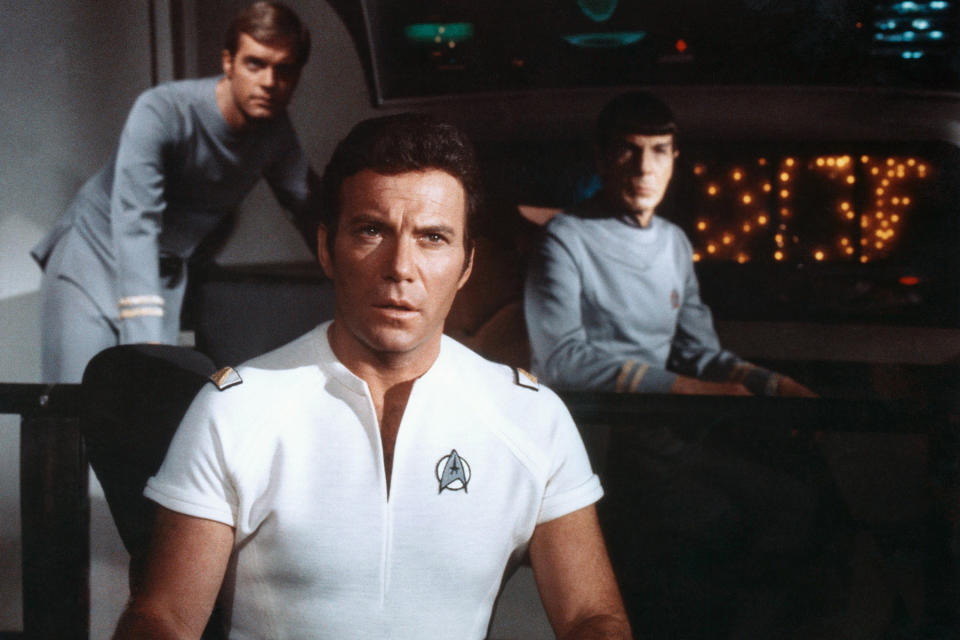
Star Trek: Not only the first show that wouldn’t stay dead, but the most impressive example of it. Even if you leave aside the many, many spinoffs with new casts and just focus on William Shatner, Leonard Nimoy, et al, it was a wild ride. NBC nearly dumped the original series after only two seasons, brought it back for a more cheaply-produced third, then canceled it for real. But the Trekkies wouldn’t let it go, and four years later, NBC brought back the ensemble for Star Trek: The Animated Series, but that couldn’t even make it to three seasons. Later in the Seventies, Paramount had plans to launch its own TV network, with yet another Kirk/Spock/McCoy revival, called Star Trek: Phase II as its centerpiece. The Paramount Television Service never became a reality, and the Phase II sets and concepts were transformed into the first of six feature films starring Shatner and company.
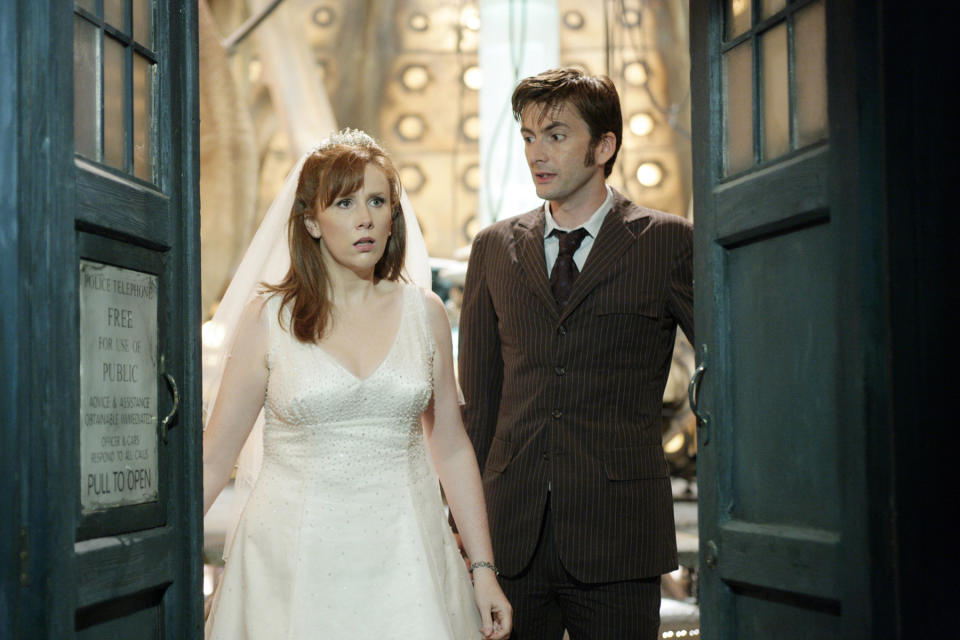
Doctor Who: Yes, the British sci-fi drama is and was so iconic that it produced a whopping 26 seasons from 1963 through 1989, and perhaps shouldn’t qualify here. But the series had completely lost steam by the late Eighties, with its lo-fi special effects coming off as too quaint, and later Doctors like Sylvester McCoy not capturing the public imagination in the way earlier ones like the Tom Baker version had. When the BBC pulled the plug on the TARDIS, it seemed inconceivable that the show would return. Seven years later, though, an international collaboration between Fox and the BBC (among others) attempted to bring back the series with a new Doctor, played in a 1996 TV-movie by Paul McGann. It performed well in the U.K., but not in the U.S.A., and that was it for the Eighth Doctor — and, seemingly, the franchise. But then in 2005, Queer as Folk creator Russell T. Davies took control of the TARDIS and pulled the series into the present, with a version — starring, over the years, Christopher Eccleston, David Tennant, Matt Smith, Peter Capaldi, Jodie Whittaker, and, soon, Ncuti Gatwa — that felt modern (and slightly more expensive) and at least as durable as the original run.
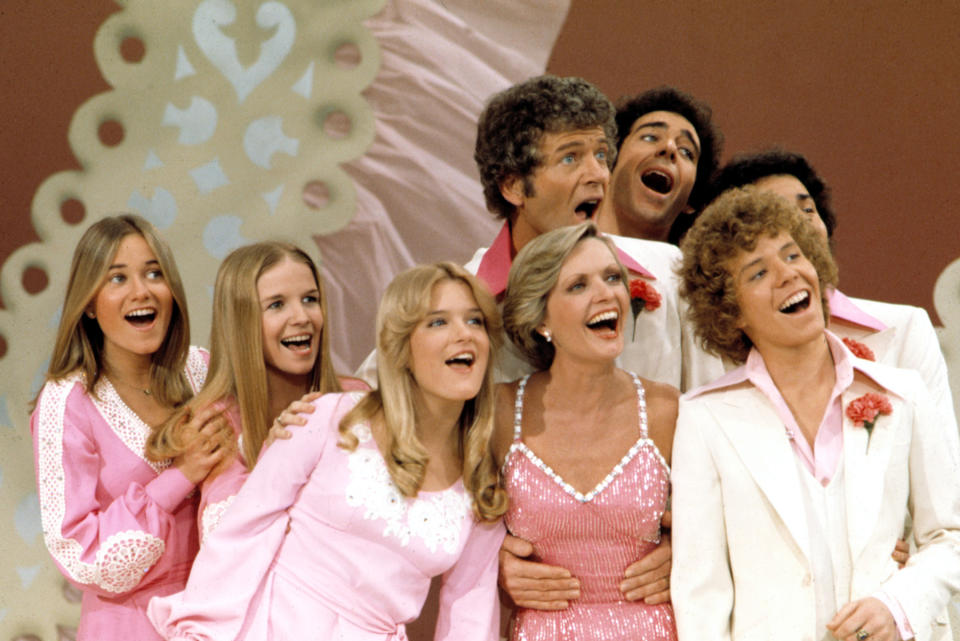
The Brady Bunch: The late Sixties/early Seventies blended family sitcom wasn’t a smash hit, never even cracking the top 30 in the yearly Nielsen rankings. Yet something about the Bradys proved both sticky and elastic. There was a Saturday morning cartoon version, The Brady Kids, that for two seasons overlapped with the original show’s run. Then, a couple of years after ABC pulled the plug on original recipe Brady Bunch, the network somehow decided to bring it back as a variety show, The Brady Bunch Hour, in which Mike gives up his architectural career so he and Carol can move the kids (with a new actress playing Jan) to the beach to become singing and dancing TV stars. This understandably lasted only a season, but the clan was far from done. In 1981, Marcia and Jan (with Eve Plumb returning) became the main characters of NBC’s The Brady Brides, a short-lived sitcom where the elder Brady sisters and their two new husbands had to share a house for… reasons. It lasted only 10 episodes (plus a preceding TV-movie, The Brady Girls Get Married). Other TV families would know to give up the ghost by this point, but not those Bradys! In 1988, the reunion movie A Very Brady Christmas proved a surprising hit for CBS, which soon ordered an ongoing series, The Bradys. This time, though, it would be an hour-long drama, featuring plots like Bobby being paralyzed in a race car accident and Marcia (played by another substitute) battling alcoholism. Yet somehow, there was also a laugh track for the sillier scenes? Unsurprisingly, audiences rejected this hot mess, and that was basically it for in-character Brady series. But all six Brady siblings reunited in 2018 for HGTV’s A Very Brady Renovation, in which the house that provided the ABC sitcom’s exterior was transformed to also resemble it on the inside. So, just to sum up: four different networks and five different genres across 50-odd years. Don’t assume they’re done just yet.
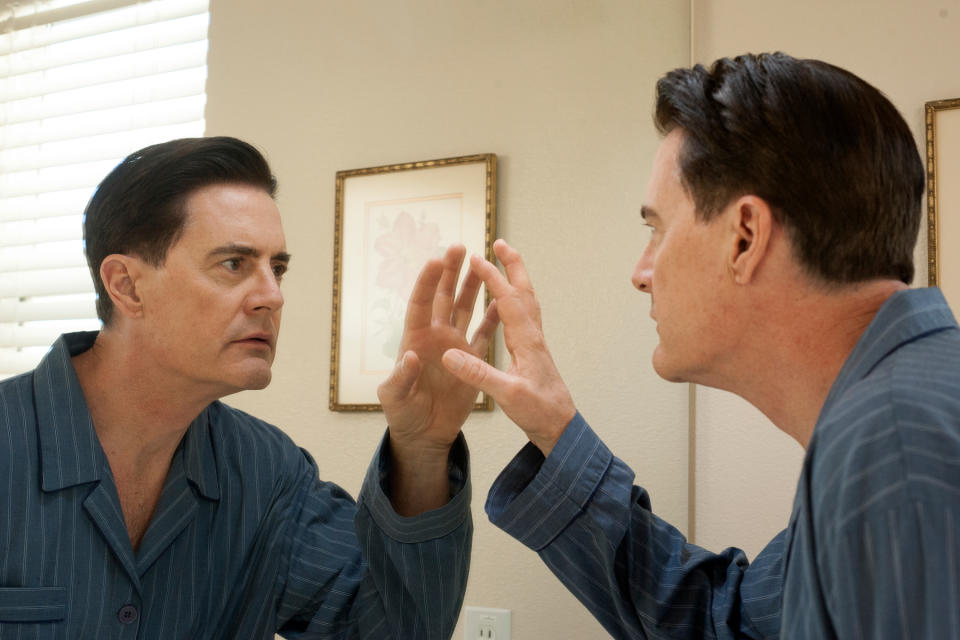
Twin Peaks: David Lynch and Mark Frost’s weird mix of gothic mystery, supernatural horror, old-fashioned melodrama, and indescribable comedy was a surprise phenomenon in its first season in the spring of 1990. But the bottom quickly fell out, both creatively and commercially, in its second, and Lynch and Frost almost defiantly ended that season on a cliffhanger (Agent Cooper’s body is possessed by Bob the demon) they knew ABC wouldn’t let them resolve. A month later, though, Lynch announced plans to direct three films to wrap up the story, only one of which got made: the 1992 prequel Twin Peaks: Fire Walk With Me. The movie was divisive, and a box office failure, and everyone moved on. But on the show, Laura Palmer had promised Agent Cooper, “I’ll see you in 25 years,” and that promise was fulfilled with the 2017 debut of Twin Peaks: The Return on Showtime, which was even more inscrutable than the original show had been. That one also ended on a cliffhanger (in which — I think, because it is deliberately confusing — Agent Cooper and Laura Palmer find themselves in our reality, unsure what year this is), but as of now, there are no plans to continue it.
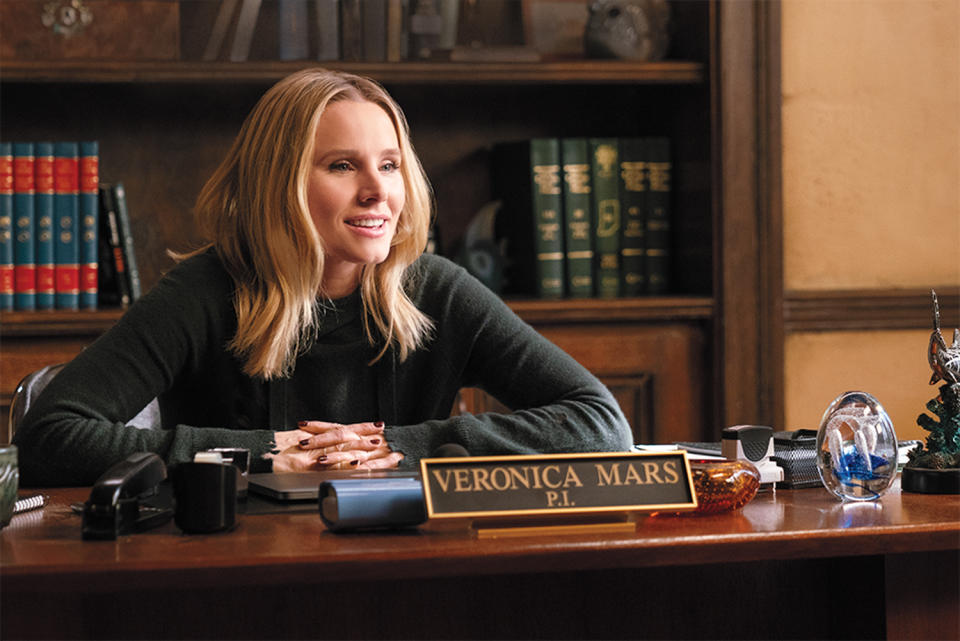
Veronica Mars: We’re not counting instances of a show hopping networks as cancellations, especially since, in the case of Veronica Mars, the network it aired on (UPN) merged with another one (the WB) to become a new one (the CW). But the Kristen Bell drama about a teenage private eye only lasted one season in its combined new home, and CW execs rejected a plan to revamp the show so that Veronica would be a rookie FBI agent. But a decade after the show ended, creator Rob Thomas launched a Kickstarter campaign for fans to self-fund a reunion movie, which even got a theatrical release once Warner Bros. stepped in to help cover expanded costs. And five years after that, Thomas and Bell brought the character back to television for a Hulu series continuing Veronica’s misadventures as a now-adult detective. The hope was for it to be an ongoing series, but mixed fan reaction — particularly to the decision to kill Veronica’s boyfriend Logan in the finale — put the kibosh on that.
Cagney & Lacey: The real-life story of this female buddy cop drama is something of an edge case, but it was a weird enough journey to ultimately qualify. First there was a 1981 TV-movie, starring Loretta Swit and Tyne Daly in the title roles. Months later, CBS ordered it as an ongoing series, but Meg Foster had to take over as Cagney because Swit couldn’t get out of her M*A*S*H contract. Six episodes were made with Foster and Daly, but ratings were low, and as an anonymous CBS official disgustingly put it in an interview explaining the decision to cancel it, “They were too harshly women’s lib,” and, “We perceived them as dykes.” Even for 1982, these sentiments were not well-received. The series’ producer Barney Rosenzweig was able to leverage both the public outcry and the sudden availability of actress Sharon Gless into getting CBS to reverse their decision. The series was back on the fall schedule, now with Gless as Cagney, but ratings were still not great, and CBS canceled it again in the spring of 1983. But there was more outcry, and the episodes that aired immediately after the cancellation ticked up in the ratings, so CBS changed its mind yet again. This time, the series was off the air for 10 months, but aired five consecutive seasons after that, won 11 total Emmys, including two for Outstanding Drama Series, and several each for Daly and Gless, and eventually proved so popular that CBS aired a quartet of reunion movies in the mid-Nineties.

